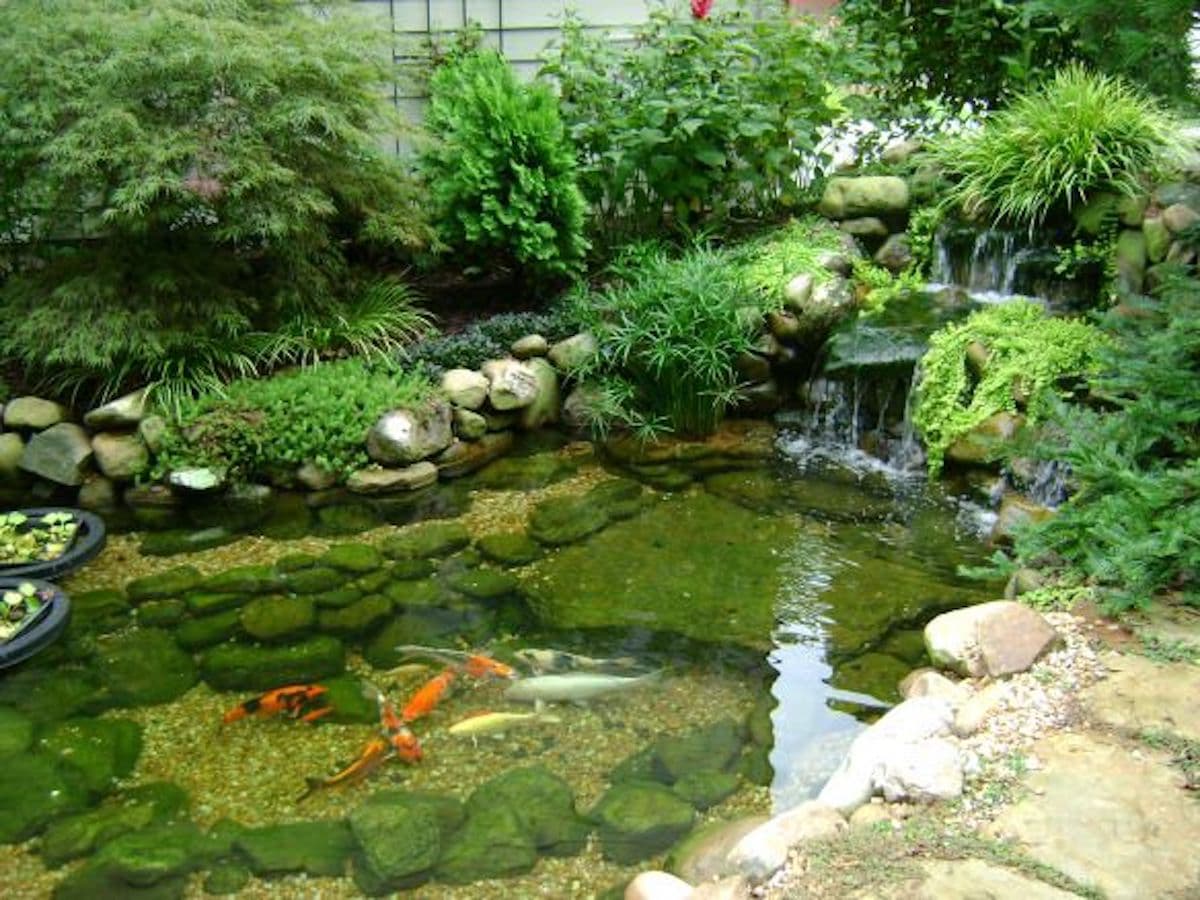Varying bottom and shoreline contour add to the visual appeal of a pond, as well as to fish and overall pond health. They can also contribute to your fishing enjoyment and function of your pond.

Shoreline Contour
Shoreline or terrestrial contour makes for an interesting look to a pond and a more natural feel, but also creates features for your fish. Fish instinctively locate areas of contour. Predator fish will often stage on and around points or bends in shoreline contour to set up easy ambush points for prey. Creating peninsulas and points in your pond design will provide your pond with natural schooling areas for both bait fish and predators.
Shoreline contour can also improve your pond’s health as well. Ponds will fill in over time. Creating a gently sloping shoreline around your pond can help prevent erosion of soil and keep debris from getting into the pond. Steeper slopes will create a greater likelihood of erosion problems and your 10′ deep pond could quickly lose several feet simply from erosion. However, a slope that is too gentle or one that allows for large areas of very shallow water can increase water temperatures and promote weed growth. A nice mix is about a 2:1 or 3:1 slope to prevent erosion and help limit some plant growth. Another key feature to shoreline contour is access to the water, not only for people and animals, but for machinery, such as fire trucks. A pond on rural property can help protect your home and buildings from fire. This has the potential to lower your insurance premiums by having a large amount of easily accessible water. However, accessibility is crucial. Make sure you plan in an area for trucks to reach the water, or install a hydrant near the pond where hoses can connect.
Bottom Contour
Bottom contour is important for fish health and survival. Like shoreline contours, they provide key movement areas for all species of fish. Having flat shallow areas is important for proper breeding ground for most species while varying bottom contours allow for additional staging and ambush points for predator fish. Many fish often stage and feed along the drop-offs into deeper water from these shallow flats. A deep water area separated from the shallow flat by the drop-off provides a safe haven, as well as a place of cooler water to retreat to during the heat of the summer.
When designing and building a new pond or revamping an existing pond, try to build in varying bottom contours. You will not only be helping your fish, but you will also know exactly where to pinpoint drop offs and areas to target at certain times during the day when fishing. Many fish will “rest” in deeper water areas, especially if there is structure. As they become more active, they will use the drop offs and flats to feed since these are areas bait fish and forage fish tend to frequent. Knowing where these areas are can put fish in the boat faster.
Like shoreline contour, bottom contour design can also help maintain depth in your pond. Steep slopes will allow for more slumping or filling in of the pond and lessening overall depth. The best way to avoid erosion of the slopes is to have gradual contours in most of the pond. Steep slopes and drop offs should include hard materials like boulders and rocks to help prevent (but still may not eliminate completely) slumping.
A healthy pond is a haven for both fish and people. Ensuring the correct pond formation through appropriate contouring can help provide years of health and for your aquaculture and years of fun for you.